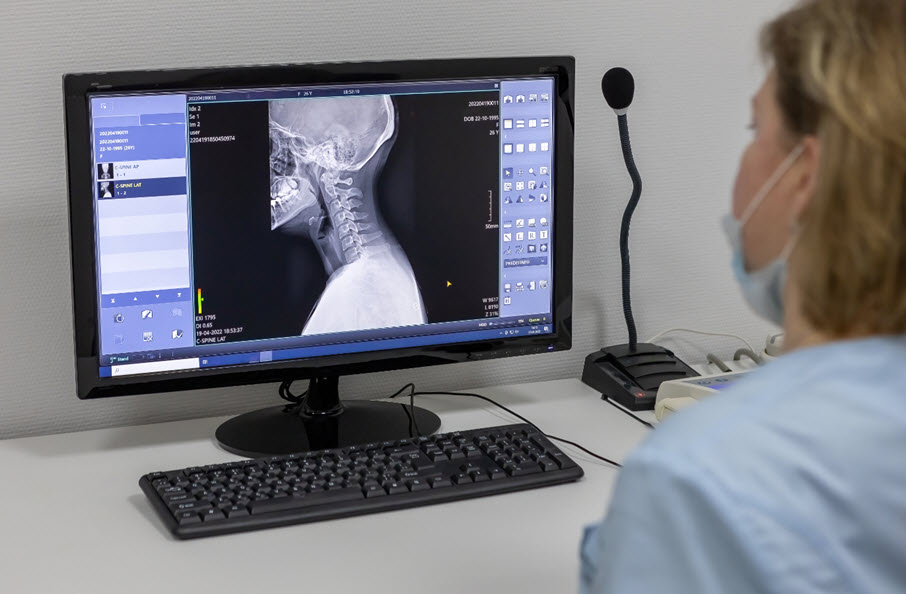Catastrophic Back Injuries and Personal Injury Lawsuits
October 16, 2025 | Catastrophic Injury
Back injuries are among the most common and potentially debilitating injuries people face after accidents like car crashes or slip and falls. When we talk about back injuries in legal and medical contexts, we’re referring to injuries affecting the entire spine. This includes three main sections:
- The cervical spine: This is the neck area
- The thoracic spine: This is the middle back
- The lumbar spine: This is the lower back
Each section plays a vital role in mobility and support, and injuries to any part can vary greatly in severity and treatment options.
After sustaining a back injury, most patients begin with conservative treatment, often called soft tissue treatment or physical therapy. Typically, this happens after a car accident or similar trauma. Here’s what a standard treatment protocol might look like:
- You visit a medical doctor who coordinates care with various specialists, such as chiropractors, neurologists, orthopedists, physical therapists, and sometimes acupuncturists.
- An MRI (magnetic resonance imaging) is ordered to assess your injury. This imaging test helps reveal the condition of your spine and discs.
- Based on the MRI results and your symptoms, specialists decide the next steps for treatment.
An MRI helps identify common injuries like a bulging disc or a herniated disc.
To visualize this, imagine the spine as a stack of vertebrae (bones) separated by discs, which act as cushions. Each disc is round and contains a jelly-like substance inside. When a disc bulges, it protrudes but the jelly remains contained. However, if the disc is herniated, the jelly leaks out through a tear in the disc’s outer wall. This leakage can press on nerve roots, causing intense pain and other neurological symptoms.
Once your injury is diagnosed, treatment varies based on severity.
Soft Tissue Treatment and Physical Therapy
For many, especially those with minor injuries like soft tissue damage, treatment involves physical therapy or chiropractic care. This conservative approach focuses on managing pain, improving mobility, and promoting healing over several months.
Epidural Steroid Injections (ESI)
When pain is more severe, especially with herniated discs pressing on nerves, doctors might recommend epidural steroid injections. These injections deliver anti-inflammatory medication directly to the affected area around the spinal cord to reduce pain.
Usually, a patient will receive a series of injections. While this treatment can provide temporary relief, it doesn’t fix the underlying problem—it only masks the pain.
Percutaneous Discectomy: Minimally Invasive Surgery
If epidural injections fail to provide lasting relief, the next step might be a percutaneous discectomy. This is a minimally invasive procedure where a surgeon uses a specialized instrument called a “striker decompressor” to suction out the herniated portion of the disc.
Think of it like using a straw to remove the leaking jelly from the disc. Removing this herniated material relieves pressure on the nerve roots and reduces pain.
This procedure is usually done in a doctor’s office or outpatient setting and takes about 10 to 30 minutes. Although it’s a surgery, it’s much less invasive than traditional spinal surgeries.
Spinal Fusion Surgery: The Most Serious Back Injury Treatment
In some cases, the injury is so severe that neither conservative treatment nor minimally invasive surgery provides relief. The disc might be too damaged, requiring a full-blown surgery known as spinal fusion.
During spinal fusion, the damaged disc is completely removed and replaced with an artificial disc. The surgeon installs hardware such as plates and screws into the vertebrae to stabilize the spine permanently. This hardware remains in the patient’s body for life.
Spinal fusion is a major surgery with a long recovery period, but it’s necessary for severe injuries that cause chronic pain or neurological deficits.
Elements of Damages in Back Injury Lawsuits
When evaluating the value of a back injury case, several elements of damages are considered. These include:
- Pain and Suffering: Compensation for the physical pain endured, both past and future.
- Loss of Enjoyment of Life: Damages for how the injury affects your ability to enjoy everyday activities and hobbies, past and future.
- Medical Expenses: Reimbursement for all medical costs related to the injury, including surgery, therapy, medications, and any future treatments.
- Lost Wages: Compensation for income lost due to inability to work during recovery, and possibly future lost earning capacity.
- Life Care Plan: For serious injuries, a detailed plan outlining ongoing medical care and support needs over a lifetime.
- Vocational Rehabilitation: Assistance in retraining or finding new employment if the injury prevents returning to previous work.
- Economic Expert Testimony: Economists may be hired to calculate the financial impact of the injury over time.
These factors all contribute to the overall value of the claim and are especially important in serious injury cases like spinal fusions.
Additional Types of Surgeries and Their Impact
Besides spinal fusion, there are other surgical options that can significantly affect the value of a case:
- Laminectomy: This surgery involves removing part of the vertebra called the lamina to relieve pressure on the spinal cord or nerves.
- Full Discectomy: Unlike a percutaneous discectomy, this is a more extensive surgery where the entire damaged disc is removed.
Back injuries can change your life dramatically, and having a clear understanding of your legal options and potential compensation ensures you are better prepared to protect your rights.
Each case is unique, and many factors influence the final settlement or verdict, including medical evidence, insurance policy limits, and the long-term impact on your life. If you or a loved one has suffered a back injury due to someone else’s negligence, it’s crucial to consult with an experienced personal injury attorney who can evaluate your case and help you pursue the compensation you deserve.

Catastrophic Back Injuries

